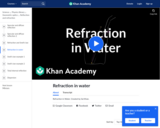
Refraction in Water
- Subject:
- Physical Science
- Physics
- Material Type:
- Lesson
- Provider:
- Khan Academy
- Author:
- Khan Academy
- Date Added:
- 09/22/2013

Refraction in Water
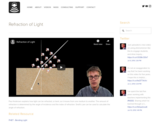
Paul Andersen explains how light can be refracted, or bent, as it moves from one medium to another. The amount of refraction is determined by the angle of incidence and the index of refraction. Snell's Law can be used to calculate the angle of refraction.
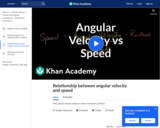
How angular velocity relates to speed

Relativity Lite is designed to accompany the main text in a course like General Astronomy, Physics for Poets, Learning Science Through Science Fiction, and Natural Science Inquiry. Relativity Lite was written for math-phobic students, so it translates the mathematical equations conventional relativity texts rely upon into pictures that are readily understood and contain within them the mathematical essentials. This book provides the comprehensive coverage needed to understand, in sufficient depth, Special Relativity, General Relativity, and Cosmology.
The site also includes an emulator that is able to run the Mac OS9 application RelLab on Intel macs or Windows machines, so that one can see how the Twin Paradox, the Barn and Plane Paradox, acceleration, and even user-designed scenarios play out.
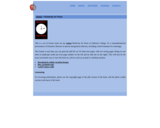
This is a set of lecture notes for my course Relativity for Poets at Fullerton College. It's a nonmathematical presentation of Einstein's theories of special and general relativity, including a brief treatment of cosmology.

Paul Andersen explains how the resistivity of a material opposes the flow of charge. Conductors (like metal) will have a low resistivity and insulators will have a high resistivity. Semiconductors will have a moderate resistivity. Since the resistivity is determined by the atomic and molecular structure it is affected by changes in temperature.

Paul Andersen explains how resistors and capacitors affect circuits. The resistance of a resistor is affected by the resistivity of the material and the geometry of the resistor. The current through a resistor can be determined by Ohm's Law.

The discovery of restriction enzymes and their applications in DNA analysis has proven to be essential for biologists and chemists. This lesson focuses on restriction enzymes and their applications to DNA analysis and DNA fingerprinting. Use this lesson and its associated activity in conjunction with biology lessons on DNA analysis and DNA replication.

Through this lesson students learn how AM radios work through basic concepts about waves and magnetic fields. Waves are first introduced by establishing the difference between transverse and longitudinal waves, as well as identifying the amplitude and frequency of a given waveform. Students then learn general concepts about magnetic fields, leading into how radio waves are created and transmitted. Several demonstrations can be performed in order to help students better understand these concepts. The goal of this lesson is for students to understand how the AM radios built during the associated activity function.
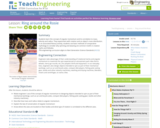
Students learn the concept of angular momentum and its correlation to mass, velocity and radius. They experiment with rotation and an object's mass distribution. In an associated literacy activity, students use basic methods of comparative mythology to consider why spinning and weaving are common motifs in creation myths and folktales.
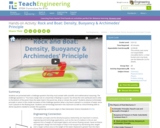
Students are presented with a challenge question that they must answer with scientific and mathematical reasoning. The challenge question is: "You have a large rock on a boat that is floating in a pond. You throw the rock overboard and it sinks to the bottom of the pond. Does the water level in the pond rise, drop or remain the same?" Students observe Archimedes' principle in action in this model recreation of the challenge question when a toy boat is placed in a container of water and a rock is placed on the floating boat. Students use terminology learned in the classroom as well as critical thinking skills to derive equations needed to answer this question.
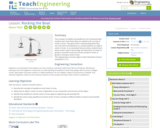
The concepts of stability and equilibrium are introduced while students learn how these ideas are related to the concept of center of mass. They gain further understanding when they see, first-hand, how equilibrium is closely related to an object's center of mass. In an associated literacy activity, students learn about motion capture technology, the importance of center of gravity in animation and how use the concept of center of gravity in writing an action scene.
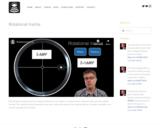
Paul Andersen explains how the angular momentum of an object if a product of the rotational inertia and the angular velocity. The rotational inertia depends on the mass, radius and shape of the rotating objects. A sample calculation and several examples are included.
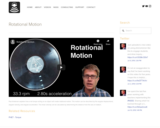
Paul Andersen explains how a net torque acting on an object will create rotational motion. This motion can be described by the angular displacement, angular velocity, and angular acceleration. The linear velocity can be calculated by determining the distance from the axis of rotation.
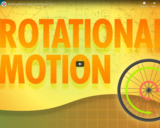
The video resource "Rotational Motion: Crash Course Physics #11" is included in the "Sociology" course from the resources series of "Crash Course". Crash Course is a educational video series from John and Hank Green.

Paul Andersen explains how scalar fields can be used to show the distribution of scalar quantities. The most important scalar fields in AP Physics 2 deal with electric potential. Scalar addition can be used to combine scalar fields.

Mr. Andersen explains the differences between scalar and vectors quantities. He also uses a demonstration to show the importance of vectors and vector addition.

Students use data acquisition equipment to learn about force and displacement in regard to simple and complex machines. In the engineering world, materials and systems are tested by applying forces and measuring the resulting displacements. The relationship between the force applied on a material, and its resulting displacement, is a distinct property of the material, which is measured in order to evaluate the material for correct use in structures and machines.

Paul Andersen explains how the second law of thermodynamics applies to reversible and irreversible processes. In a reversible process the net change in entropy is zero. In and irreversible process the entropy will always increase in a closed system.

When a derivative of a function appears on one side of an equation and the function appears somewhere on the other side, it is common to employ a series of manipulations of notation that are called separation of variables. This strategy is often presented in a way that makes it seem as though differentials were quantities that could be independently moved around an equation. The purpose of this video is to show that the same end result can be obtained more rigorously using u-substitution, in other words, using a "change of variables."